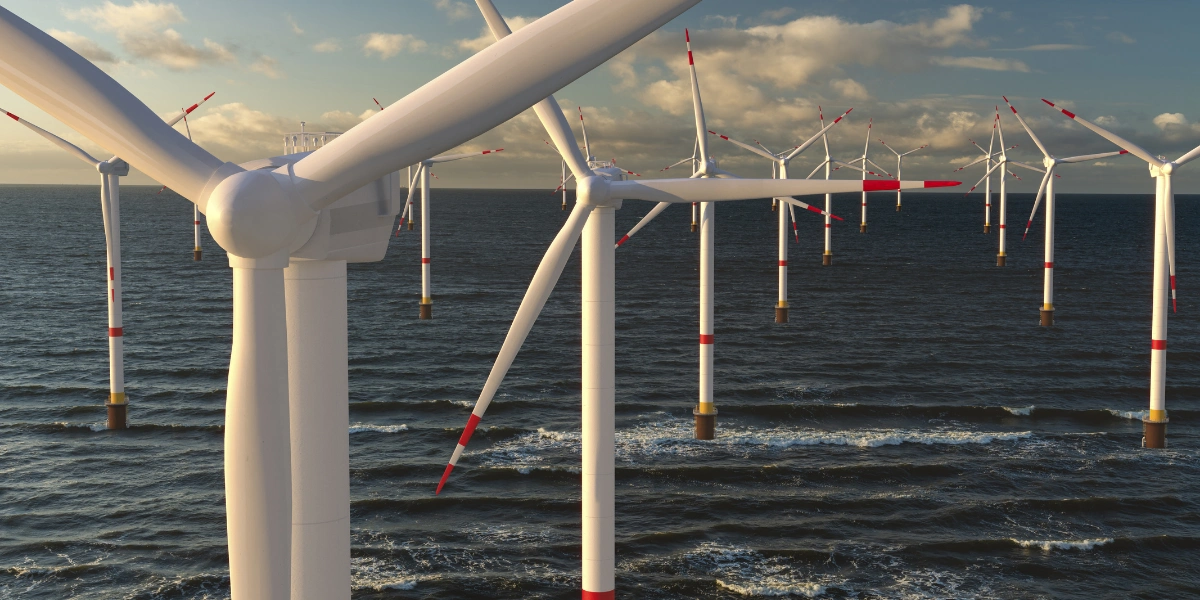
- Blog
- 25 Jul 2025
The Role of Composite Materials for Wind Turbine Blades
As the world turns to cleaner energy, wind power has become one of the most popular and reliable sources. At the heart of every wind turbine are its blades, which must be strong, lightweight, and durable to work efficiently. This is where composite materials for wind turbine blades play a key role. These advanced materials help the blades last longer, perform better, and handle tough weather conditions.
Why Composite Materials Are Used in Wind Turbine Blades
Wind turbine blades must be both light and strong to spin easily and survive in harsh environments. Traditional materials like metal are often too heavy or may not handle stress and fatigue well over time. This is why composite materials for wind turbine blades have become the preferred choice in the industry.
Composites combine two or more materials to create something better than each material on its own. For wind blades, this means strong, flexible structures that can handle high winds, temperature changes, and long-term use. These materials also resist corrosion, which is very important for turbines placed near the sea or in wet climates.
One of the key reasons for using composite materials for wind turbine blades is that they help blades stay lightweight without losing strength. This allows turbines to spin more efficiently, generating more power while using less energy to move. Composites also make it easier to build longer blades, which capture more wind and significantly increase energy output.
In modern production, techniques like the pultrusion manufacturing process allow manufacturers to create high-quality composite parts with consistent shape and strength. This not only reduces waste but also lowers costs, making wind energy even more sustainable and affordable.
Composite Materials for Wind Turbine Blades: Types and Performance
There are several types of composite materials for wind turbine blades, each offering specific advantages based on blade size, wind conditions, and cost efficiency. These materials are selected carefully to balance strength, weight, and durability. Below are the most common types used in the industry today:
Glass Fiber Reinforced Polymers (GFRP)
GFRP is the most widely used material in wind turbine blade manufacturing. It combines glass fibers with a polymer matrix, usually epoxy or polyester resin. The result is a material that is lightweight, strong, and affordable. GFRP is also resistant to corrosion and easy to work with, making it ideal for large-scale production.
These fibers help the blade flex under stress without breaking. This flexibility makes GFRP a great choice for turbines in areas with constantly changing wind speeds. Its good performance and lower cost make it especially popular for medium- to large-sized wind turbines.
Carbon Fiber Reinforced Polymers (CFRP)
CFRP is stronger and lighter than GFRP but also more expensive. It is made from carbon fibers and a polymer resin. Because of its high strength-to-weight ratio, CFRP is often used in high-performance wind turbines, especially those with very long blades.
This material helps reduce blade weight while keeping high stiffness. This is important for reducing the load on the turbine tower and allowing the blades to rotate more efficiently. CFRP is commonly used in offshore wind turbines where high performance and durability are critical.
Hybrid Composite Materials for Wind Turbine Blades
Hybrid composites combine two or more types of fibers—like glass and carbon—to create a material that balances performance and cost. For example, a blade might use carbon fiber in high-stress areas and glass fiber in less critical sections. This smart combination offers better mechanical properties while keeping costs lower than full carbon fiber designs.
As blade designs become more advanced, hybrid composites offer engineers more flexibility to match material strength with performance needs. They also support longer blade life, especially when tested through methods like composite fatigue testing, which checks how the material behaves under repeated stress over time.
How Composite Materials Improve Wind Turbine Blade Performance
The use of composite materials for wind turbine blades greatly improves how turbines work and how long they last. These materials help blades stay light, strong, and flexible—all important qualities for smooth and efficient operation.
First, lighter blades reduce the amount of energy needed to rotate. This means the turbine can start generating power even at lower wind speeds. Lightweight blades also create less stress on the main shaft and tower, which helps reduce wear and tear on the whole system.
Second, composites offer high strength and flexibility. This means the blades can bend slightly in strong winds without cracking or breaking. This is especially important in storms or gusty weather. With better fatigue resistance, thanks to advanced testing methods like composite fatigue testing, blades made from composites can last for 20 years or more with less maintenance.
Finally, composite materials for wind turbine blades improve blade shape and aerodynamics. Their smooth surfaces and custom forms help the blades catch more wind and spin more efficiently. Manufacturing methods like the pultrusion manufacturing process allow for high precision and consistency in blade design, further enhancing performance.
Overall, the smart use of materials like GFRP, CFRP, and hybrid composites leads to stronger, longer-lasting, and more efficient wind turbines—helping to create cleaner energy for the future.
In today’s fast-growing wind energy sector, the right materials make all the difference. Composite materials for wind turbine blades offer the strength, flexibility, and durability needed to meet modern energy demands. From traditional glass fibers to advanced hybrid composites, each material plays a role in boosting performance and efficiency. With smart production techniques and ongoing material testing, wind turbines are becoming more powerful and reliable than ever. As technology moves forward, composites will continue to lead the way in building a cleaner, more sustainable energy future.


